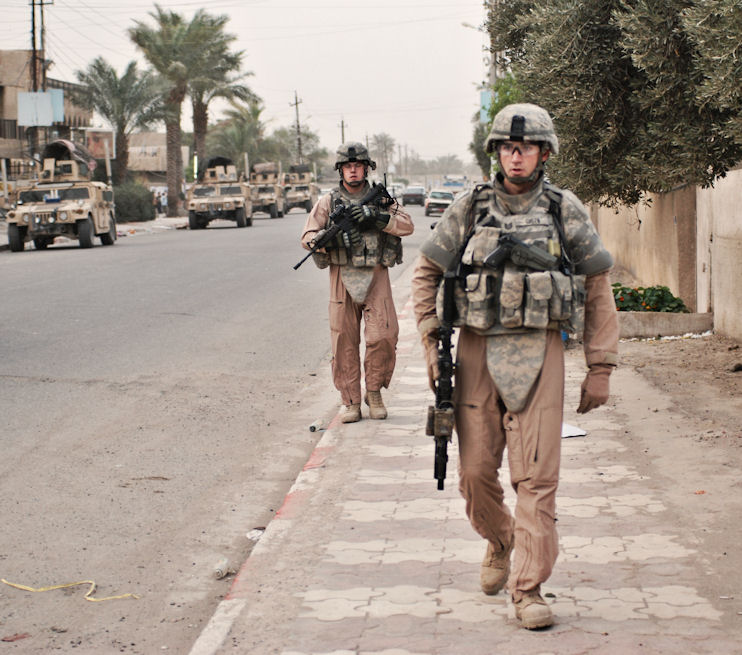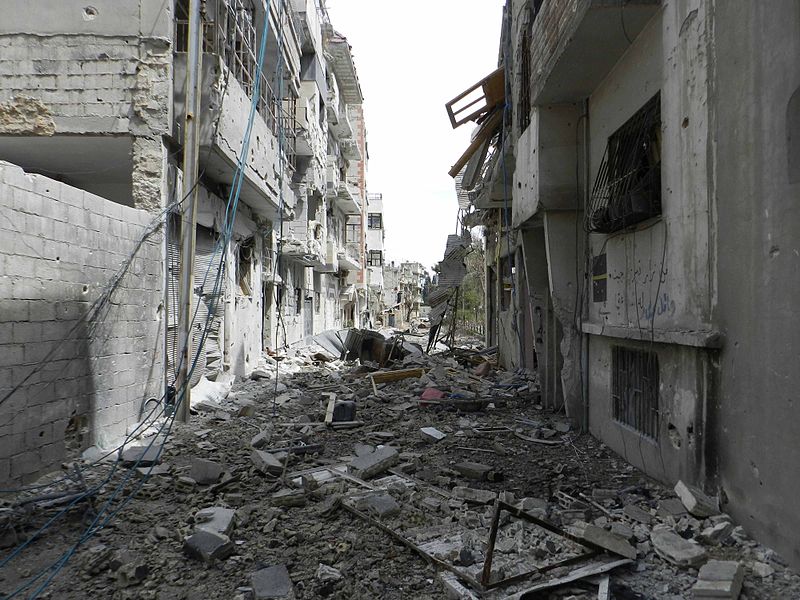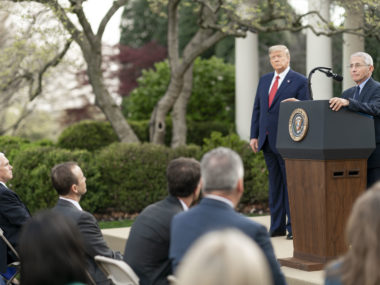Guest post by Eli Berman and Aila M. Matanock

Imagine a counterinsurgency challenge: government forces (like the Iraqi Army) face insurgents (like ISIL) who emerge from among the population to attack them.
How do counterinsurgents succeed? In “The Empiricists’ Insurgency” (ungated PDF) we describe a five point framework to answer the question. We know that the insurgent’s actions are likely to be observed by the population that it hides among, and so success rests on gaining information—tips—from that population. We also know that those conflicts are asymmetric—characterized by strong, well equipped government forces and relatively weak rebels whose major asset is a compliant population.
Building on classic counterinsurgency literature and a wealth of new empirical studies, here are five key principles.
- Government Service Provision Reduces Rebel Violence: Services provision by government should decrease the use of violence by the rebels. Evidence from the Commanders Emergency Response Program (CERP) in Afghanistan and Iraq shows that spending reduces attacks. For example, in Iraq a dollar of CERP spending per capita reduced violence by 1.6 incidents per 100,000 residents over a half year. These programs, however, must be conditional on cooperation from the population in order to succeed. Moreover, effective conditionality is most likely when projects are small and designed by development experts. Not all development programs meet those conditions, and, in fact, most fail to reduce violence locally.
- Counterinsurgents Must Complement Services with Security: These service programs only work if they are also secure. Attacks are only reduced when troops are stationed in the same district.
- Civilian Casualties, However, Reduce Civilian Support: As counterinsuregents attempt to gain information from the population, they must also avoid civilian casualties. Evidence on attacks, as well as on attitudes suggest that civilians blame counterinsurgents for civilian casualties, losing the very support that counterinsugents seek.
- Tips Increase with Anonymity: To gain information from the population, counterinsugents must provide a method for civilians to anonymously report those tips. Data on the rollout of cellphone coverage in Iraq suggests that information increases with this technology.
- Governments and Rebels Both Provide Services: Finally, evidence strongly supports the basic implication of this framework, that rebels as well as governments seek to provide services, seemingly in an effort to gain this information. For example, evidence on rebel provision includes instances in Northern Ireland, the Philippines, Iraq, Lebanon, Afghanistan, and Pakistan.
While this framework provides insights about how counterinsurgents succeed, significant questions remain. Two of the most important concern sustainability:
- Why does the population provide tips? Is it enough for government to outgovern (or perhaps just outbid) insurgents in the short term? Or must they change expectations and even preferences about governance in the long term? Most of the evidence that we have is indirect. Preferences are difficult to measure—recent research has explored experimental methods for measuring attitudes, as well as actions, in the context of insurgency, but many questions remain—and it is difficult to know which set of preferences civilians will act on under particular circumstances.
- Does counterinsurgency work with foreign boots on the ground? Most work so far is unable to distinguish between governments and foreign allies as counterinsurgents. When removing forces, foreign allies often trade off the legitimacy of the local combatant against its compliance in counterinsurgency, control of ungoverned spaces, and quality of governance. For instance, the US could influence the inclusiveness of governance much more with forces in Iraq than it can without. We know very little about the responsiveness of combatants to incentives provided by foreign allies, or why foreign allies sometimes abandon conditionality in those relationships. Research along those lines is well motivated by current policy concerns.
These questions become more important as the United States and its allies drawn down in Afghanistan and focus on smaller, more cooperative missions, such as force training in Iraq, French military assistance in Mali, or efforts to guarantee election-based power-sharing bargains. Can a temporary intervention in conflict environments followed by a more remote presence induce the type of persistent improvements in governance that would produce a successful counterinsurgency in the long-term? While the lessons of the past 15 years are instructive, there’s an urgency to learn more.
Eli Berman is Professor of Economics at UC San Diego, Research Director at the UC Institute of Global Conflict and Cooperation, and Research Associate at the National Bureau of Economic Research. Aila M. Matanock is an Assistant Professor of Political Science at the University of California-Berkeley.







3 comments
Surely a most important factor in the prospects of counterinsurgency is the way in which the interests and intentions of the counterinsurgent forces are perceived by the target population, which may have something to do with their reality. For example, it is very doubtful that the people of Vietnam, Afghanistan, or Iraq perceived any intention to do them good on the part of American counterinsurgency operations. And, indeed, such a perception would border on insanity. However, various factions in the population may be willing to accept buyoffs (services) from the counterinsurgency operation, as well as from the insurgents they fight against. So if the power behind the counterinsurgency is wealthy enough to buy enough of its opponents off, it may succeed, at least temporarily, as seems to have been the case in Sunni Iraq.